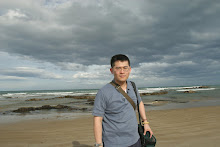When last I walked through Sea World upon the Gold Coast, I could not help but marvel at the radiant spectacle before me. The dolphins arced in perfect symmetry, the seals clapped as though with laughter, and the gathered crowd delighted in the illusion of joy. Yet within me lingered the shadow of what I had once seen in sober documentaries, where the gloss of performance was stripped away to reveal confinement, separation, and lives bound to pools smaller than the seas they once knew. The play was glorious, yes, but it carried the weight of sorrow.
In recent years, questions have only deepened. Animal welfare advocates, particularly PETA, decry the keeping of dolphins in artificial lagoons far too small for creatures who might, in the wild, traverse vast oceans each day. TripAdvisor, recognising the unease, withdrew from selling tickets to Sea World in 2019, a gesture that marked a shift in public conscience. And though the park proudly unveiled a state-of-the-art marine hospital in July 2025—proclaiming its devotion to rescue, treatment, and release—critics still whisper of breeding programs, separations of mother and calf, and deaths uncounted in public record.
The park itself is not of the same ownership as its American counterpart, yet the echoes of Blackfish still ring across the Pacific. The haunting story of Tilikum the orca lingers as a parable, casting doubt upon any institution that commands marine mammals to perform. To its credit, Sea World Gold Coast has mounted genuine rescues, freeing whales from nets and tending to stranded creatures upon the shore. But for every story of compassion, another arises of captivity’s toll, of creatures whose intelligence and spirit exceed the limits of the enclosures that bind them.
Thus my memory of that visit remains divided: wonder at the beauty of the performance, and grief for what such beauty conceals. The truth of Sea World is, perhaps, like the sea itself—ever shifting, capable of reflecting both splendour and cruelty, depending upon the light in which one chooses to stand.
Linking Saturday Critter
















.jpg)












